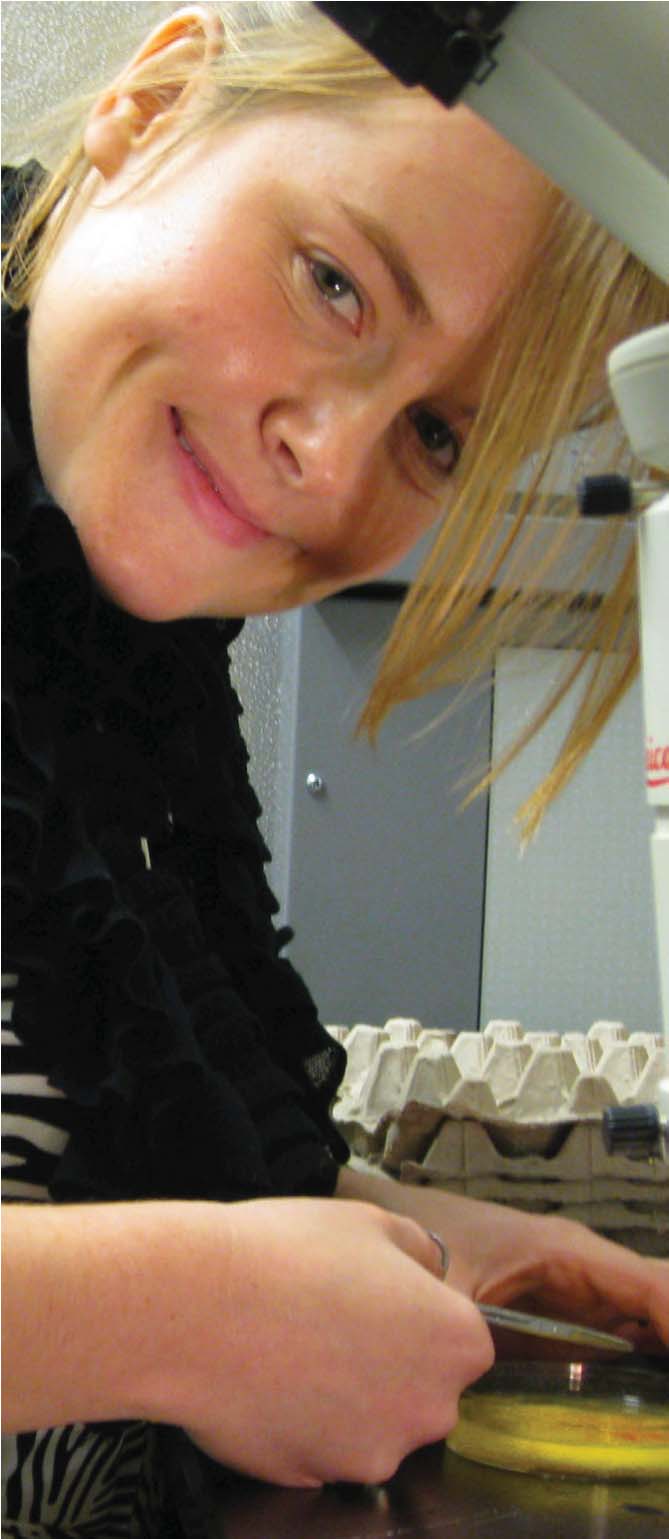Life on the faculty fast track leads to new developmental discoveries
 One of the College’s youngest faculty, precocious Polish immigrant Natasza Kurpios kicked off her Cornell career earlier than most.
One of the College’s youngest faculty, precocious Polish immigrant Natasza Kurpios kicked off her Cornell career earlier than most.
“We met by chance at a conference in Barcelona,” said Dr. Ruth Collins, professor in the Department of Molecular Medicine. “She had recently started as a post-doc at Harvard and was presenting a poster on her work that was attracting a lot of buzz in the field. Inspired by her talent and potential, I encouraged her to apply to our department. Her interview confirmed how well her research aligned with the department’s established strength in signal transduction, and her boundless energy and infectious enthusiasm made it clear she would be an outstanding teacher and colleague.”
The department offered Kurpios a faculty position, allowing time to complete her work at Harvard. There she discovered the first vertebrate example linking changes in organ development to changes at the level of individual cell shapes. Now she is expanding this work while leveraging the College’s diversity of animal systems in avian and mammalian species.
“We investigate how cells change shape to form organs, and the genes regulating this process,” said Kurpios. “On the outside most animals look symmetrical. On the inside it’s a different story. The heart and stomach are on the left, the liver is on the right, intestines loop and coil from left to right in just the right shape to fit in the body.
“Organs growing in the wrong direction or the wrong place cause problems. For example, in babies born with a birth defect called ‘gut malrotation’, incorrectly looped intestines tie themselves in knots, compromising digestion and blocking off their own blood supply. We knew this was controlled by genes but no one knew which genes were responsible.”
Looking through windows she made in chicken eggs to study developing embryos, Kurpios discovered the key gene regulating intestine looping: PITX2.
“This gene is like the conductor of a vast orchestra, setting off a cascade of signals telling other genes how to build organs. All species have this gene on the left side of the body. If it ends up on the wrong side, the organ map shifts and the intestines loop improperly.”
This discovery shed light on how gut malformations can develop. “We are looking into the potential role of PITX2 in this and other bowel obstruction issues, such as gastric dilatation and volvulus, that commonly afflict dogs and horses as well as humans,” said Kurpios.
Actively engaged with peers in the Vertebrate Genomics Group and the Cornell Stem Cell Program, Kurpios also collaborates with computational biologists and bioengineers across campus to model developmental changes and analyze the mechanical properties of tissue matrices influencing organ growth.
“These are fundamental biological questions with enormous applicability to stem cell biology and cancer studies,” said Collins. “Kurpios’s hiring reflects the goals of New Life Science initiative in strengthening key research areas and recruiting faculty to work across disciplinary boundaries.”
~~~
‘Scopes Magazine
July 2011